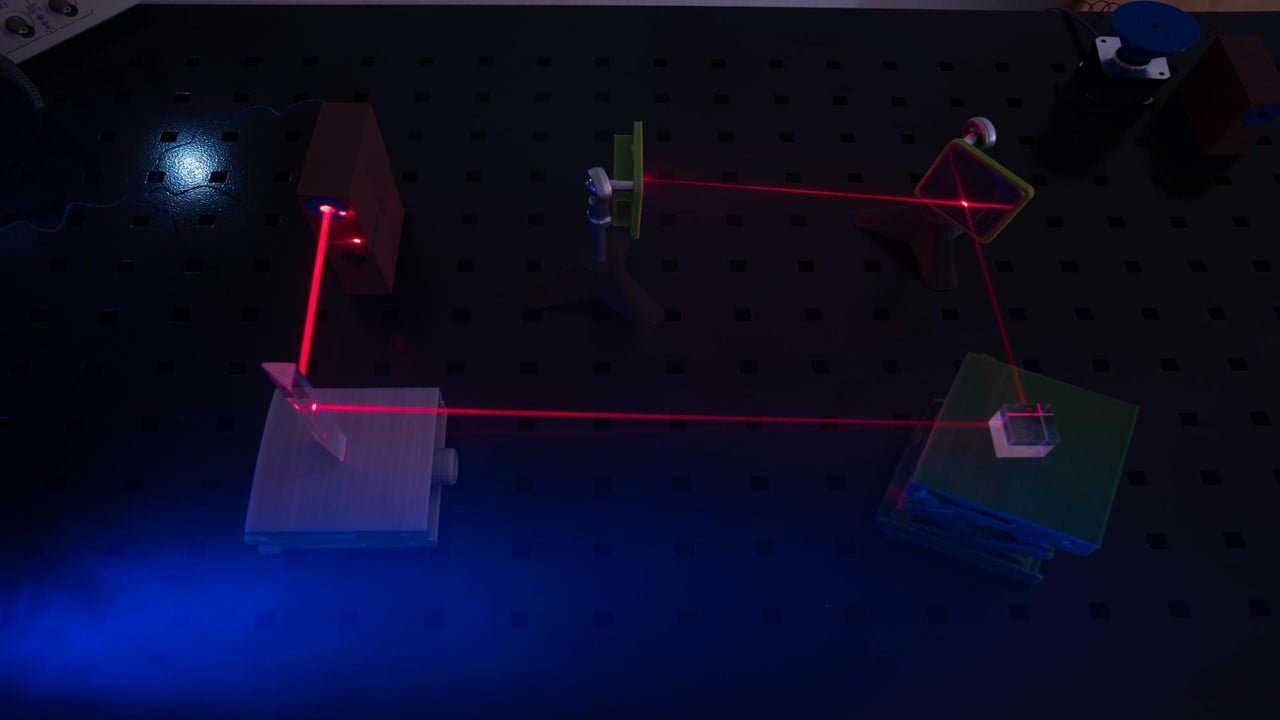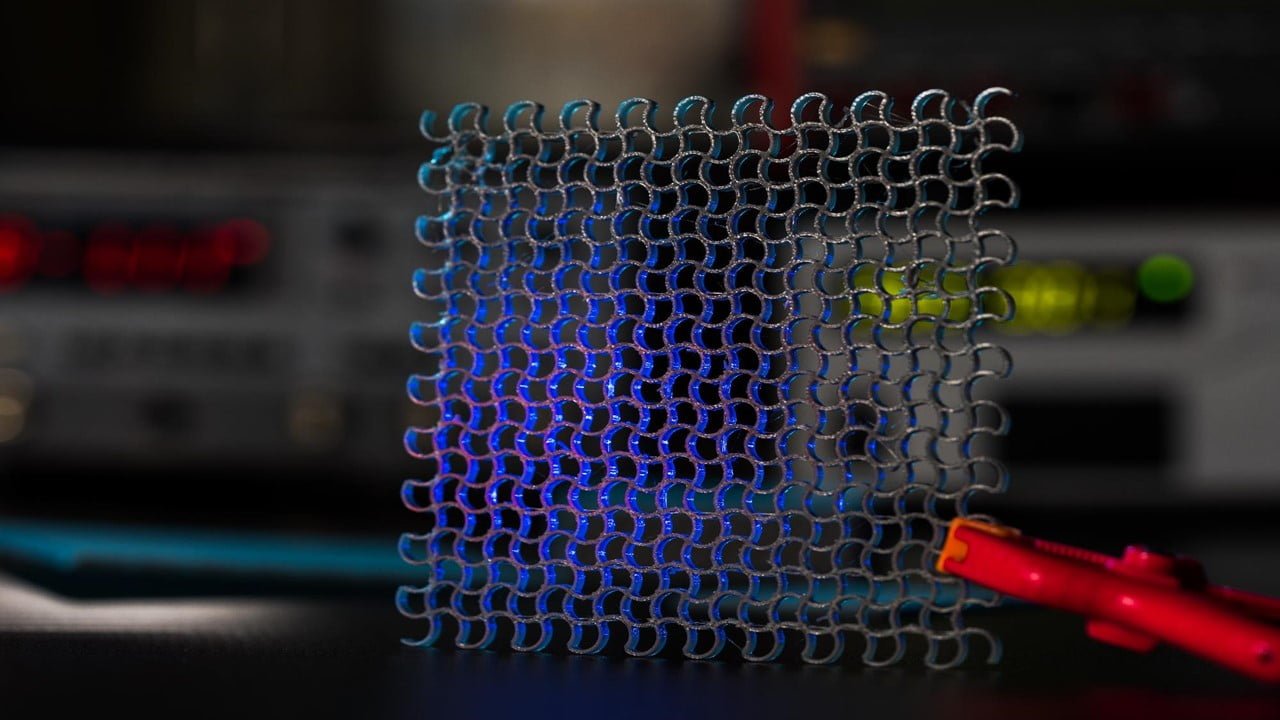
Electrochemical reduction and evolution of oxygen are two critical reactions that almost determine the performance and efficiency of clean-energy devices due to their sluggish reaction kinetics and large overpotential. Apart from the oxygen reduction/evolution reaction (ORR/OER), the importance of the hydrogen evolution/oxidation reaction (HER/HOR) cannot be ignored either, as hydrogen can work as a powerful [..]
Read More
Semiconductors, at the heart of electronic and optoelectronic devices, necessitate high-purity materials and expensive manufacturing processes. On the other hand, emerging applications frequently require a combination of the electronic and optical properties of inorganic semiconductors and cost-effective solution-based fabrication techniques suitable for industrial-scale manufacturing. Colloidal quantum dots (QDs) have emerged as a versatile platform for [..]
Read More
Scientists have achieved efficient electron-beam modulation using integrated photonics – circuits that guide light on a chip. The experiments could lead to entirely new quantum measurement schemes in electron microscopy. The transmission electron microscope (TEM) can image molecular structures at the atomic scale by using electrons instead of light and has revolutionized materials science and [..]
Read More
Neurons use electrical pulses and chemicals to communicate with each other. Analyzing both is critical for studying brain function and spotting brain diseases, but today’s implants can measure only one or the other. Researchers have now made a multifunctional brain chip that can measure both electrical charges and neurochemicals in the brain and inject drugs [..]
Read More
According to a new study, a diagnostic blood test may help detect early-stage lung cancer in asymptomatic patients. Lung cancer, the leading cause of cancer death, is typically diagnosed late in the progression when the survival rate is extremely low. The current method for detecting early lung cancer lesions, low-dose spiral CT imaging, is not [..]
Read More
Exploring several contrasts in situ/operando at the nanoscale, such as X-ray fluorescence, diffraction, luminescence, and absorption, using synchrotron light on microfluidic systems, has the potential to reveal new properties and functionalities of materials in diverse areas, such as green energy, photonics, and nanomedicine. Researchers created and characterized a multifunctional polyester/glass-sealed microfluidic device that is well-suited [..]
Read More
Molecules have complex signatures in their spectra at infrared wavelengths, typically accessed using specialized spectroscopic equipment. Researchers discovered optomechanical frequency upconversion at ambient conditions from the mid-infrared to the visible domain using molecular vibrations coupled to a plasmonic nanocavity. Both approaches demonstrate the ability to upconvert the mid-infrared vibrations of the molecules in the nanocavity [..]
Read MoreDepending on the electronic properties of the two materials, a primary metal-semiconductor interface can create a potential energy barrier to the efficient flow of electrons. It is critical to carefully select the contact material and the process for depositing material onto the semiconductor. Design considerations for optoelectronic components such as light-emitting diodes (LEDs), photodetectors, and [..]
Read More
Researchers have developed a novel tunable optical filter for smart IR night vision imaging systems. They used a new phase-changing material (PCM) called GSST, which goes through a phase transition at a higher transition temperature (around 300°C). It is created by partially substituting selenium for tellurium, resulting in Ge2Sb2Se4Te1. Compared to Ge2Sb2Te5, the phase-changing material [..]
Read More
Current augmented reality (AR) and virtual reality (VR) displays only show 2D images. They need to be perceptually realistic. Now, researchers are trying to bridge this gap between simulation and reality while creating more visually appealing displays. The study describes a method for decreasing the speckling distortion seen in traditional laser-based holographic displays – neural [..]
Read More
With the use of light, traditional microscopes enhance images of minute structures or objects. On the other hand, Nanoparticles are so small that they rarely absorb or scatter light and go undetected. An optical resonator boosts light-nanoparticle interaction by capturing light in the smallest possible space by reflecting it thousands of times between two mirrors. [..]
Read More
Any visible-spectrum application of ultrashort laser pulses must overcome a fundamental challenge: red light travels more quicker through transparent materials like glass than blue light. As a result, when an ultrashort laser pulse passes through a glass lens, the tightly packed light wavelengths disperse, rendering the beam useless. For decades, optical experts have struggled with [..]
Read More
Scientists scanned donated human organs, including lungs, from a Covid-19 donor using a new groundbreaking imaging technology called Hierarchical Phase-Contrast Tomography (HiP-CT). HiP-CT offers 3D mapping at many scales, allowing clinicians to see the entire organ for the first time by imaging it and then zooming down to the cellular level. The European Synchrotron (a [..]
Read More
GASMAS (gas in scattering media absorption spectroscopy) is a noninvasive gas sensing technique. It’s becoming a valuable tool for diagnosing and monitoring neonatal respiratory conditions. Phantom models with attributes relevant to the clinical translation of GASMAS technology are necessary to comprehend the technique’s technical limitations and possible uses. State-of-the-art phantoms have focused on the thorax’s [..]
Read More
Researchers have designed a Fresnel hologram to focus light in the transverse direction (x–y plane) and disperse it linearly along the optical axis (z-axis). It functions not only as a focusing but also as a dispersive element along an optical axis. The computational method uses the wave-optics principle. The hologram disperses broad wavelengths over a [..]
Read More
At 1 trillion operations per second, a new optical switch is 100 to 1,000 times faster than today’s leading commercial electronic transistors. The research could lead to a new generation of computers that run on light rather than electricity. The new device has a 35-nanometer-wide organic semiconductor polymer film sandwiched between two highly reflective mirrors. [..]
Read More
Researchers have developed holey dielectric metasurfaces that achieve high nanostructure aspect ratios and are mechanically robust. It opens a possible path to achieving large-diameter achromatic metalenses by expanding the accessible range of group delays. The dielectric metasurfaces comprise ultradeep via-holes through a thin membrane with aspect ratios approaching 30:1. As the material around each hole [..]
Read More
Engineers are using a non-invasive optical probe to study the complex changes that occur in tumors following immunotherapy. Their approach combines detailed mapping of tumor biochemical composition with machine learning. Immunotherapy truly works like magic and has fundamentally altered our understanding of how cancer can be managed. However, only 25% of patients benefit from it, [..]
Read More
A team of engineers has demonstrated an improved technique for growing high-performance photodetectors made from III-V materials directly on a platform compatible with silicon photonics. The team’s approach puts together several micropatterning and deposition methods to create a monolithic indium-phosphate/silicon-on-insulator (InP/SOI) platform tuned for growing such devices in various dimensions. The engineers devised a new method [..]
Read More
Researchers have discovered new information that will aid materials scientists in predicting how material properties change due to stresses such as high temperatures. The current model for forecasting a material’s structure and properties does not apply to polycrystalline materials. So, they developed a new model using near-field high energy diffraction microscopy (HEDM). Most metals, alloys, [..]
Read More